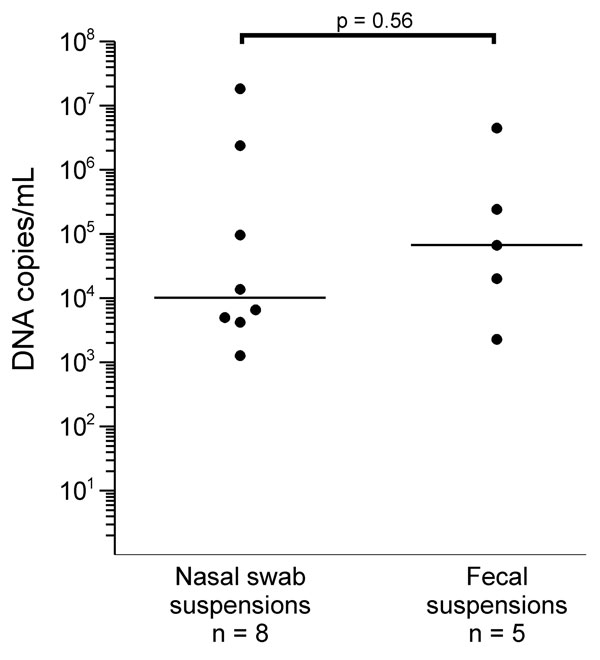Volume 18, Number 10—October 2012
Dispatch
Human Parvovirus 4 in Nasal and Fecal Specimens from Children, Ghana
Figure 1

Figure 1. . . Parvovirus 4 DNA loads in virus-positive nasal and fecal specimens from children, Ghana. Virus concentrations are given on a log scale on the y-axis. Each dot represents 1 specimen. Horizontal lines represent median values for each sample type. For calculation of statistical significance of the difference in viral quantities between sample types, the Mann-Whitney U test was used. Virus quantities in nasal swabs and feces are given for sample suspensions (nasal swabs in 1.5 mL of stabilizing reagent and feces in a 10% suspension in phosphate-buffered saline).
Page created: October 05, 2012
Page updated: October 05, 2012
Page reviewed: October 05, 2012
The conclusions, findings, and opinions expressed by authors contributing to this journal do not necessarily reflect the official position of the U.S. Department of Health and Human Services, the Public Health Service, the Centers for Disease Control and Prevention, or the authors' affiliated institutions. Use of trade names is for identification only and does not imply endorsement by any of the groups named above.